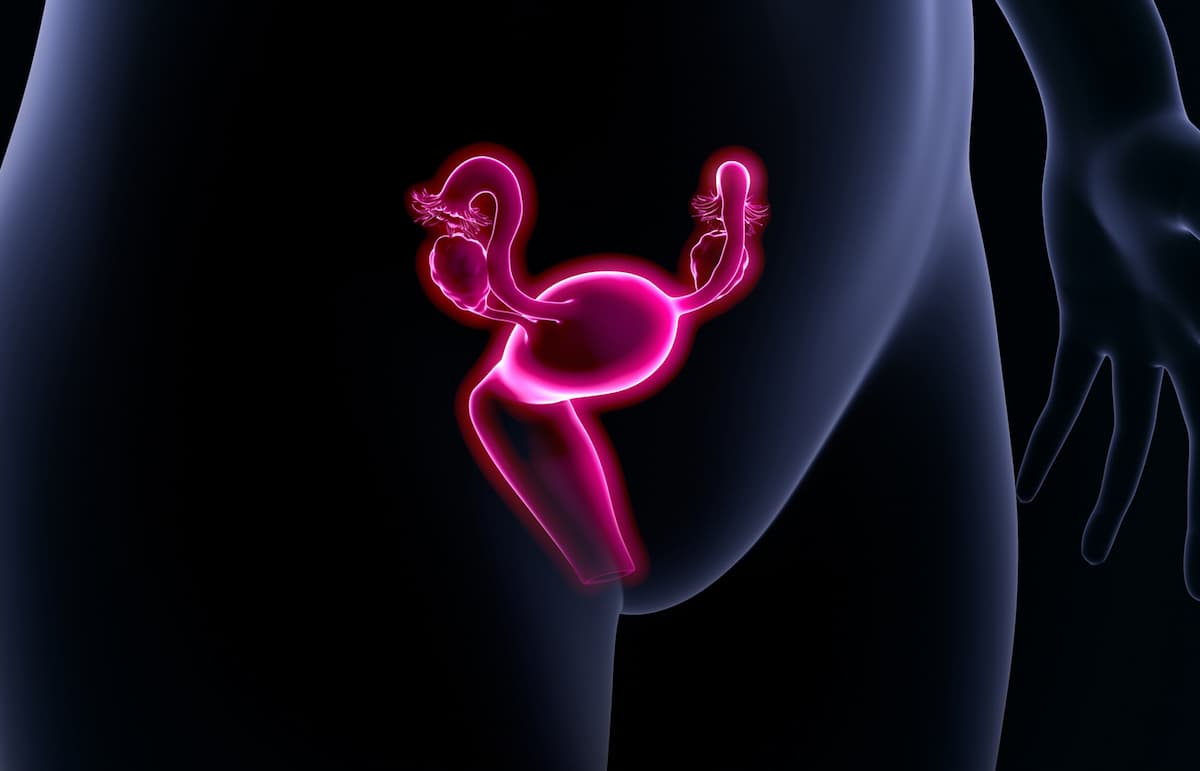CXCR4 Expression in Gynecologic Malignancies Correlates With OS
The use of 68Ga pentixafor complements fluorodeoxyglucose and had no correlation with CXCR4 immunohistochemistry.
Kaplan-Meier estimates for survival showed that pentixafor survival was higher when the SUVmax was less than 6 vs 6 or higher.

CXCR4 expression was heterogeneous and less intensive than fluorodeoxyglucose (FDG) and correlated with enhanced overall survival (OS) outcomes in gynecologic malignancies, according to preliminary results from a clinical study presented at the 2025 Society of Nuclear Medicine and Molecular Imaging Annual Meeting.
The study, which evaluated the diagnostic performance of CXCR4-directed PET imaging using gallium GA 68-pentixafor (68Ga pentixafor) vs FDG F 18 and CXCR4 immunohistochemistry in patients with gynecologic malignancies, had results that showed that FDG exhibited more intense uptake of primary lesions compared with pentixafor. The standardized uptake value (SUV) mean pentixafor median was 3.0 vs 8.6 for the SUV mean FDG median (P < .0001), and the total lesion uptake (TLU) median values were 238.2 vs 525.2, respectively (P = .00089).
Furthermore, patients who died had higher median TLU vs those alive at data cutoff, with respective values of 328 vs 203; however, statistical significance was not reached (P = .246). Twenty of 34 patients (59%) evaluable for TLU assessment had died at the time of analysis. Furthermore, metabolic tumor volume was higher among patients who died vs those who were alive at the time of analysis, with respective values of 119 vs 58 (P = .08).
Additionally, Kaplan-Meier estimates for survival showed that pentixafor survival was higher when the maximum SUV was less than 6 vs 6 or higher (P = .46).
Regarding lesion uptake, FDG identified a greater number of tumors vs pentixafor in the cervix and endometrium, with 117 vs 71 lesions identified in the former and 30 vs 10 lesions identified in the latter. A similar number of lesions were identified with FDG and pentixafor in the vulva and ovaries, with 35 vs 34 vulvar lesions identified and 76 vs 76 ovarian lesions identified.
Additional data revealed that FDG identified more primary lesions, with 34 primary lesions observed vs 28 lesions with pentixafor, and more lymph node lesions, with 126 lesions observed vs 91 lesions. Nine lung lesions were identified with both imaging techniques, and only 1 liver lesion was seen with FDG.
“In summary, CXCR4 expression in [gynecologic] malignancies is heterogeneous and less intense than FDG,” Bawinile Hadebe, PhD, MBChB, nuclear medicine physician and head of the Clinical Unit in the Nuclear Medicine Department at Inkosi Albert Luthuli Central Hospital and the University of KwaZulu-Natal in Durban, South Africa, stated in the presentation. “[CXCR4] correlates with OS, and the uptake was higher in vulvar and ovarian [cancer] compared with endometrial and cervical [cancer].”
The study enrolled 34 women with gynecologic malignancies of the cervix, vulva, ovary, and endometrium to undergo 68Ga pentixafor PET/CT. FDG was performed in 26 patients, with 8 unable to undergo imaging with FDG. A total of 16 patients had available tissue for CXCR4 immunohistochemistry.
There were a total of 20 patients with cervical cancer, 8 with vulvar cancer, 5 with ovarian cancer, and 1 with endometrial cancer. The median age by each respective cancer type was 47 years (range, 24-75), 44 years (range, 38-49), 58 years (range, 22-70), and 71 years.
The study was conducted to address a paucity of studies investigating 68Ga pentixafor in gynecologic malignancies. CXCR4 overexpression is historically associated with tumor growth, angiogenesis, and an increased risk of metastases. In preclinical studies, the addition of a CXCR4 antagonist, plerixafor (Mozobil), to standard radiotherapy/cisplatin in gynecologic malignancies was associated with improved primary tumor response and reduced lymph node metastases.
Reference
Hadebe B, Gabela L, Nxasana TS, et al. Preliminary results of first clinical experience with 68Ga-pentixafor PET/CT imaging in gynecological malignancies, a comparison with 18F-FDG and CXCR4 immunohistochemistry. Presented at: 2025 Society of Nuclear Medicine and Molecular Imaging Annual Meeting; June 21-24, 2025; New Orleans, LA. SS07.